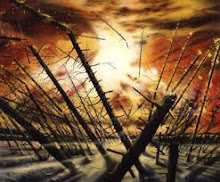In 1986–87, a German team installing a network of seismic stations while prospecting for oil discovered about 65 meteorites on a flat, desert plain about 100 km southeast of Dirj (Daraj), Libya. A few years later, a desert enthusiast saw photographs of meteorites being recovered by scientists in Antarctica, and thought that he had seen similar occurrences in northern Africa. In 1989, he recovered about 100 meteorites from several distinct locations in Libya and Algeria. Over the next several years, he and others who followed found at least 400 more meteorites. The find locations were generally in regions known as regs or hamadas: flat, featureless areas covered only by small pebbles and minor amounts of sand. Dark-colored meteorites can be easily spotted in these places, where they have also been well-preserved due to the arid climate, and in the case of the Dal al Gani meteorite field, favorable geology consisting of basic rocks (clays, dolomites, and limestones) and lacking erosive quartz sand.
Although meteorites had been sold commercially and collected by hobbyists for many decades, up to the time of the Saharan finds of the late 1980s and early 1990s, most meteorites were deposited in or purchased by museums and similar institutions where they were exhibited and made available for scientific research. The sudden availability of large numbers of meteorites that could be found with relative ease in places that were readily accessible (especially compared to Antarctica), led to a rapid rise in commercial collection of meteorites. This process was accelerated when, in 1997, meteorites coming from both the Moon and Mars were found in Libya. By the late 1990s, private meteorite-collecting expeditions had been launched throughout the Sahara. Specimens of the meteorites recovered in this way are still deposited in research collections, but most of the material is sold to private collectors. These expeditions have now brought the total number of well-described meteorites found in Algeria and Libya to over 2000.
As word spread in Saharan countries about the growing profitability of the meteorite trade, meteorite markets came into existence, especially in Morocco, fed by nomads and local people who combed the deserts looking for specimens to sell. Many thousands of meteorites have been distributed in this way, most of which lack any information about how, when, or where they were discovered. These are the so-called "Northwest Africa" meteorites.




No comments:
Post a Comment